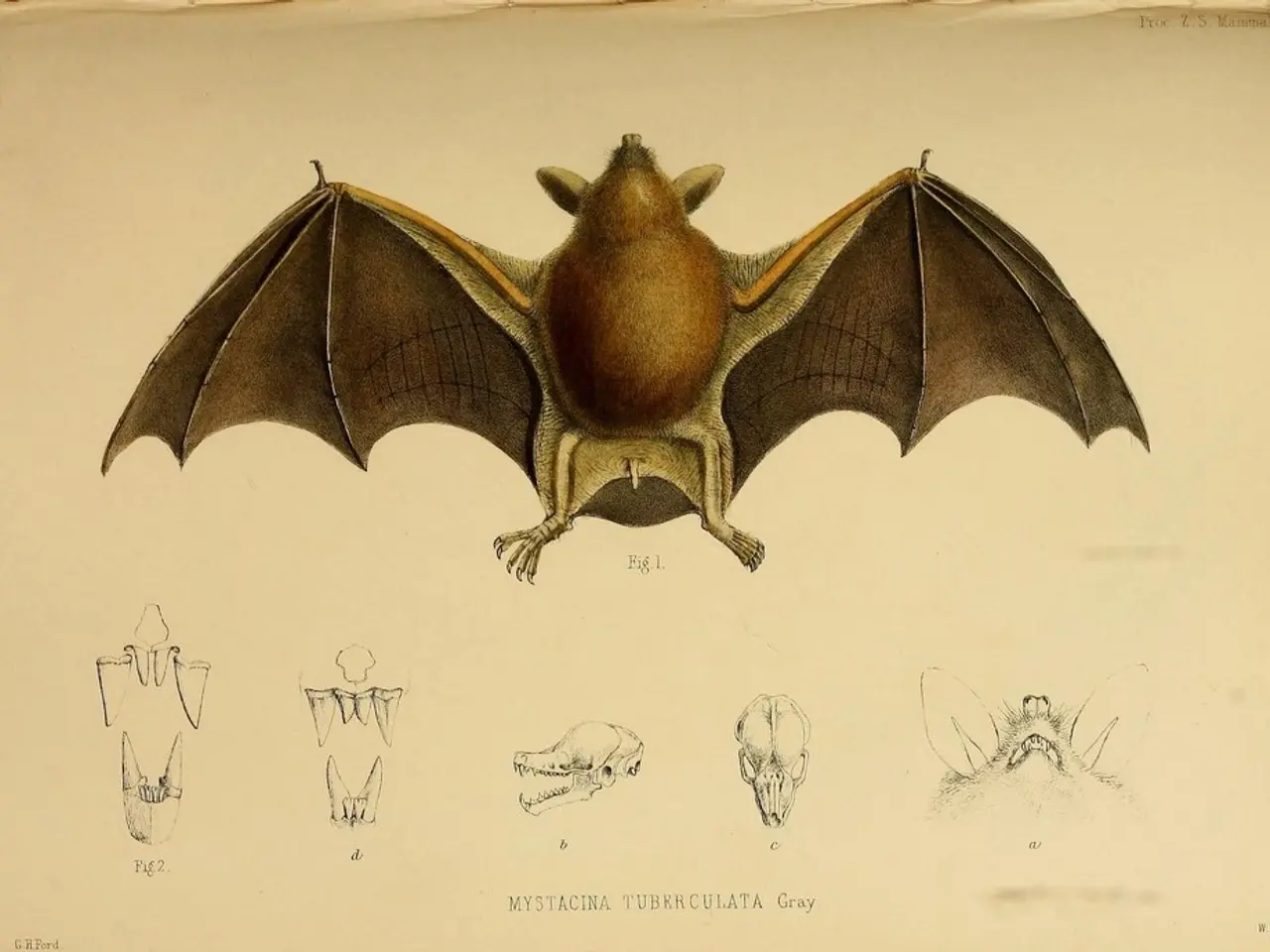Mantises Employ Ultrasonic Hearing to Evade Bats
In the intricate dance of nocturnal nature, one of the most fascinating battles unfolds between the praying mantis and its predator, the bat. A recent discovery by neuroscientist David Yager at the University of Maryland has shed light on the praying mantis' unique defence mechanism against these aerial predators.
The praying mantis, equipped with an ultrasonic hearing system, has a single ear located on its chest. This ear is finely tuned to detect the ultrasonic frequencies emitted by bats during echolocation, providing the insect with an early warning system for approaching predators at night [1][3][5].
Upon detecting these bat echolocation pulses, the mantis reflexively performs an evasive manoeuvre, dropping steeply and twisting mid-air to break the bat’s hunting sonar target acquisition [1]. This defensive strategy, akin to a fighter pilot's evasive manoeuvres, gives the mantis a chance to safely land and hide [1].
This auditory adaptation is a prime example of a highly specialized evolutionary response to predation pressure from echolocating mammals [3][5]. Interestingly, research reveals that many insects, including grasshoppers, green lacewings, and tiger beetles, have evolved a similar bat countermeasure known as the "bat sensitive ear" [4].
David Yager made a name for himself by discovering the mantis ear while he was a graduate student at Cornell University. His groundbreaking research on the praying mantis' ultrasonic hearing system has been widely recognised, with Brock Fenton, a bat specialist at York University in Toronto, Canada, praising its significance [6].
To further understand this extraordinary defence mechanism, Yager and his graduate student, Jeffrey Triblehorn, developed a surgical procedure to implant electrodes into a praying mantis' head, around its auditory nerve [7]. This allowed them to record the signals sent to the mantis' brain by its ear when it hears the ultrasonic cries of a bat.
As the bat nears prey, it increases the rate of these calls, eventually climaxing in a "feeding buzz" as it prepares to strike [2]. The mantis perceives the increased rate of ultrasonic pulses emitted by a bat and calculates the right moment to dive to avoid capture [8].
In a remarkable twist, the mantis' auditory nerve goes completely dead 300 milliseconds before the bat hits the mantis [9]. This suggests a level of sophistication in the mantis' auditory system, as it seems to shut down just before impact to prevent any potential harm.
The bat uses these reflected signals for orientation and as part of its sonar system to detect food. However, the praying mantis' ultrasonic hearing system has evolved to give it an edge in this aerial battle, allowing it to pick up frequencies above 20,000 hertz, just beyond the range of humans [10].
Next month, Yager and Triblehorn will present their most recent findings at the First Pan-American/Iberian Meeting on Acoustics, in Cancun, Mexico [6]. As the world continues to uncover the mysteries of the natural world, the defensive manoeuvres of the praying mantis serve as a testament to the wonders of evolution and the intricate dance of predator and prey.
- The health and wellness of the praying mantis is a topic of interest in the scientific community, as a neuroscientist named David Yager discovered its unique defence mechanism against bats.
- In the realm of education and self-development, David Yager's research on the praying mantis' ultrasonic hearing system has contributed to our understanding of fitness and exercise-related adaptations in nature.
- Technology plays a crucial role in furthering our knowledge about the praying mantis' defence mechanism, as Jeffrey Triblehorn, along with David Yager, used implanted electrodes to record the signals sent to the mantis' brain during bat encounters.
- The study of space and astronomy might seem unrelated, but the praying mantis' ability to hear ultrasonic frequencies, just beyond the range of humans, is an example of how some creatures have evolved to explore other unseen aspects of their environment, much like technological advancements allow us to peer into the far reaches of the cosmos.




